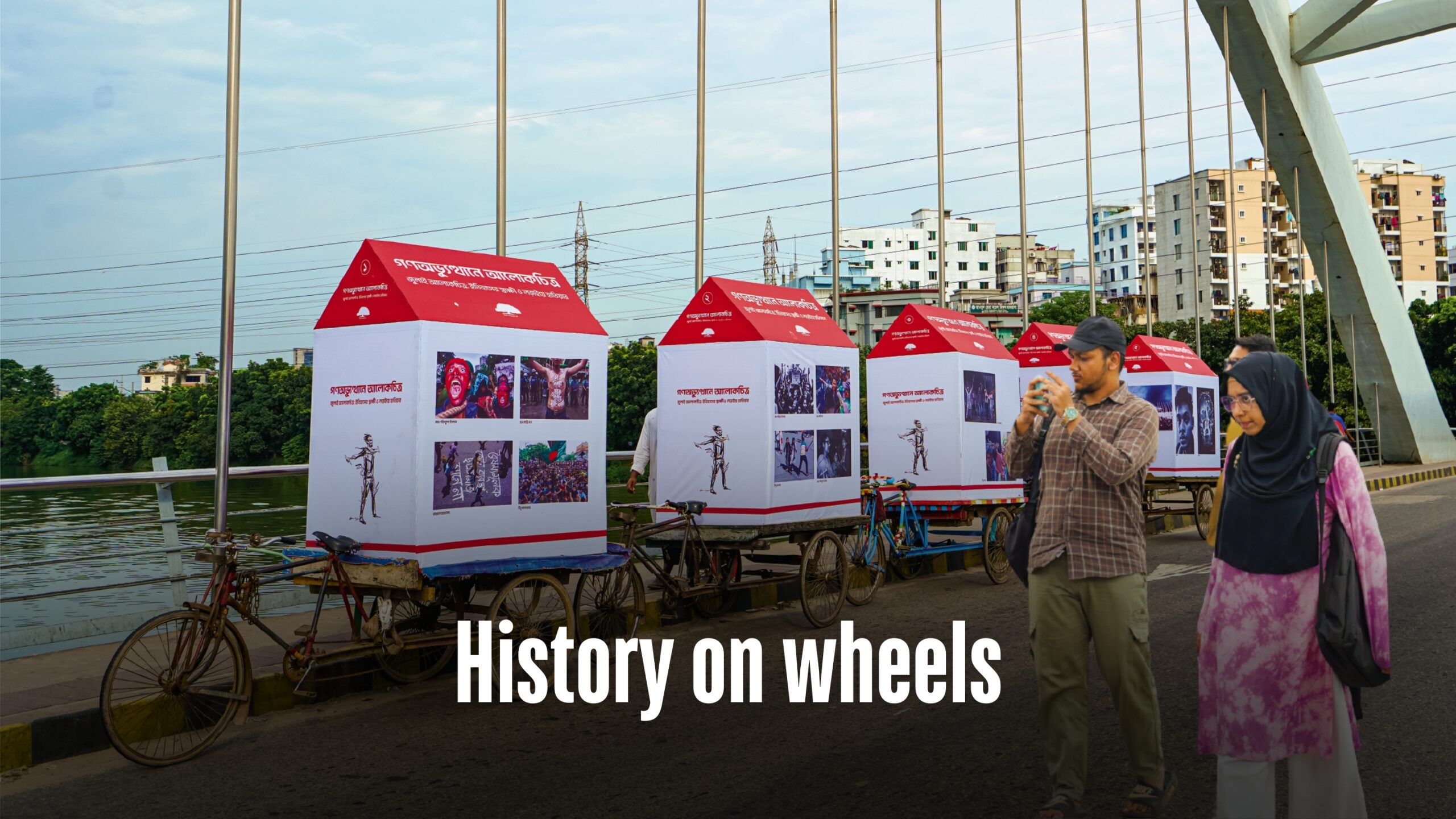
Pedestrians paused in silence, bus conductors gazed from their windows—some recognising familiar faces, others lost in painful memories. A powerful street exhibition in Dhaka displayed haunting images from Bangladesh’s July 2024 Mass Uprising, bringing the city’s recent trauma into public view.
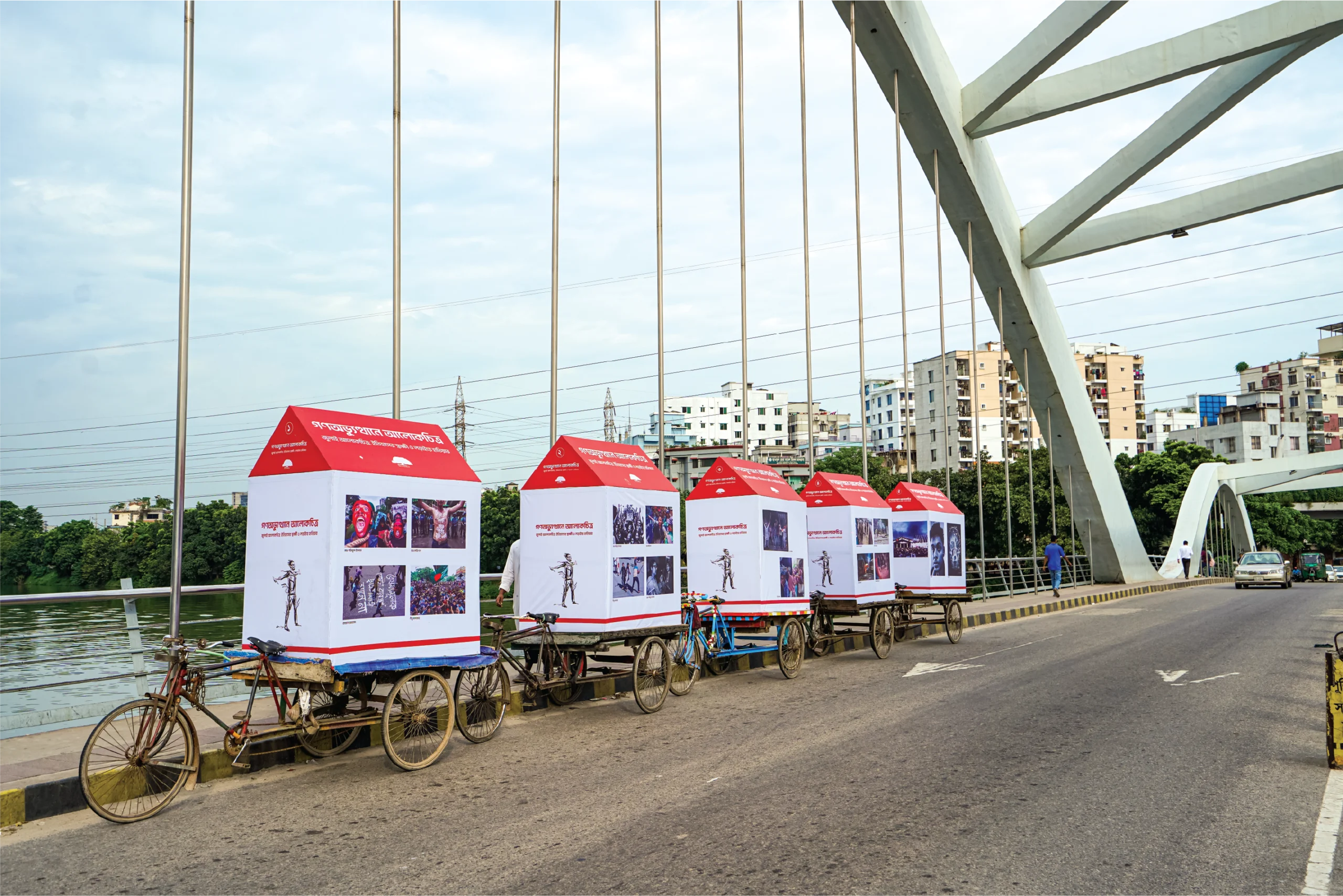
“While traditional galleries in Dhaka often cater to only a certain class of people, a floating street exhibition was envisioned as a way to bring art into public spaces—making it accessible to people from all walks of life,” says Taslima Akhter, the acclaimed photojournalist and activist who organised the event alongside Pathshala South Asian Media Institute.
On August 11-12 of 2025, five exhibition vans set out from the Raju Memorial Sculpture at Dhaka University, bringing the story of the July Uprising to the streets of Dhaka, covering most of the significant spots where the revolution took place.
The key aspects of this floating exhibition were to demonstrate the participation of students, professionals, everyday people—especially women—and the significance of D-Day, August 5.
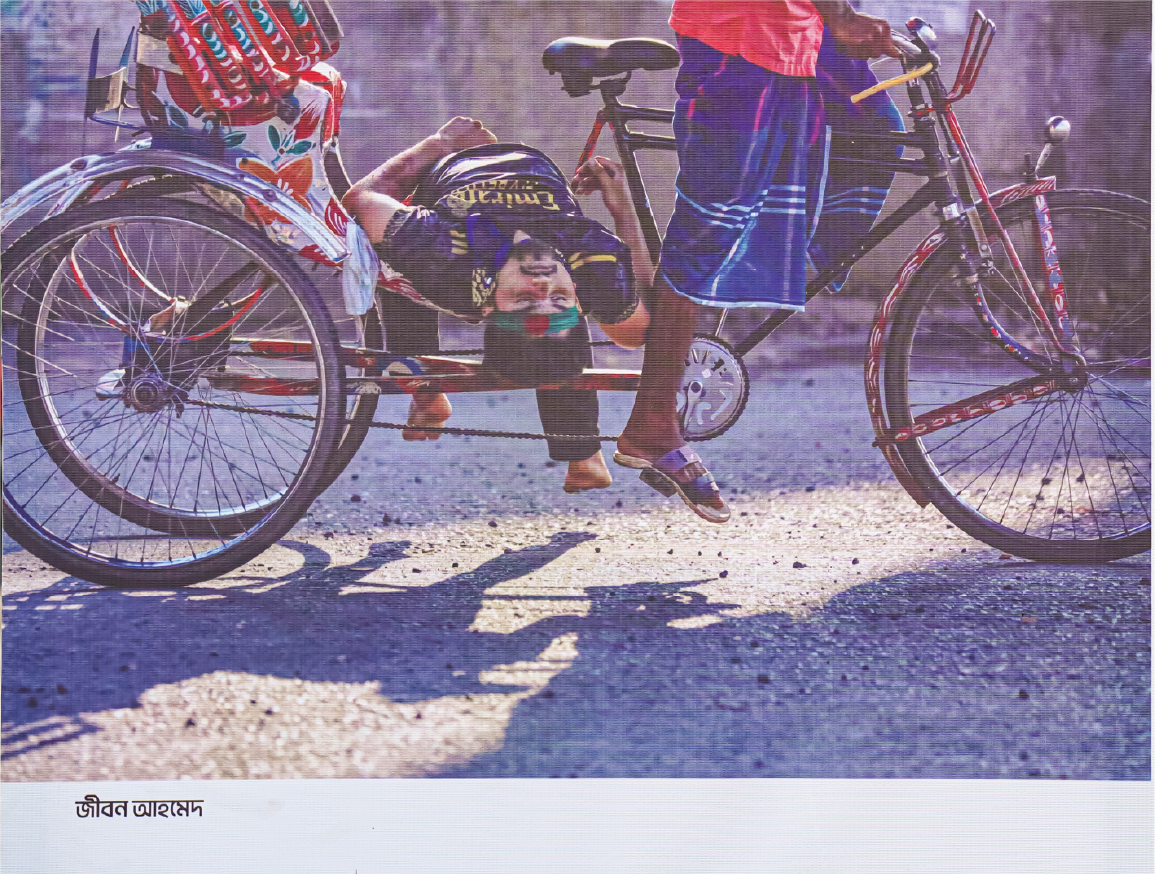
Creatively set up on vans, photographs and artworks were mounted on temporary house-like structures with striking red roofs, drawing the attention of day labourers, students, office workers, chauffeurs, and people from all walks of life—just as they once came together to free the country from the 15-year authoritarian regime under Sheikh Hasina’s government.
The vans stopped at key sites of the uprising, letting visitors engage with the images. Organisers admitted the street exhibition was challenging—but they were committed to reaching as many people as possible.
Originally planned to honour the martyrs on the uprising’s first anniversary, the exhibition was postponed due to logistical challenges. “What you see now is a collection of the works we were able to gather, with consent from the participating photographers,” said Taslima.
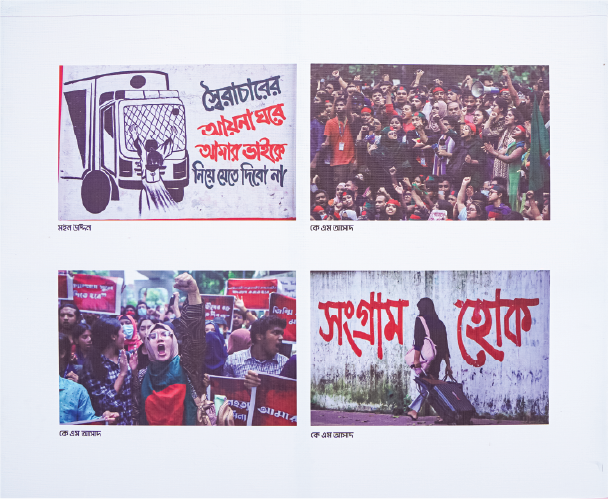
She further said how we’re not only fighting the effects of fascist ideology in our society, but also confronting it within our own thought processes.
In the past, many artists and photographers hesitated to share their work—uncertain whether to publish without captions, or anxious about choosing the right words. But now, we’re seeing more and more artists overcome that fear, driven by a collective urge to tell the truth through their work.
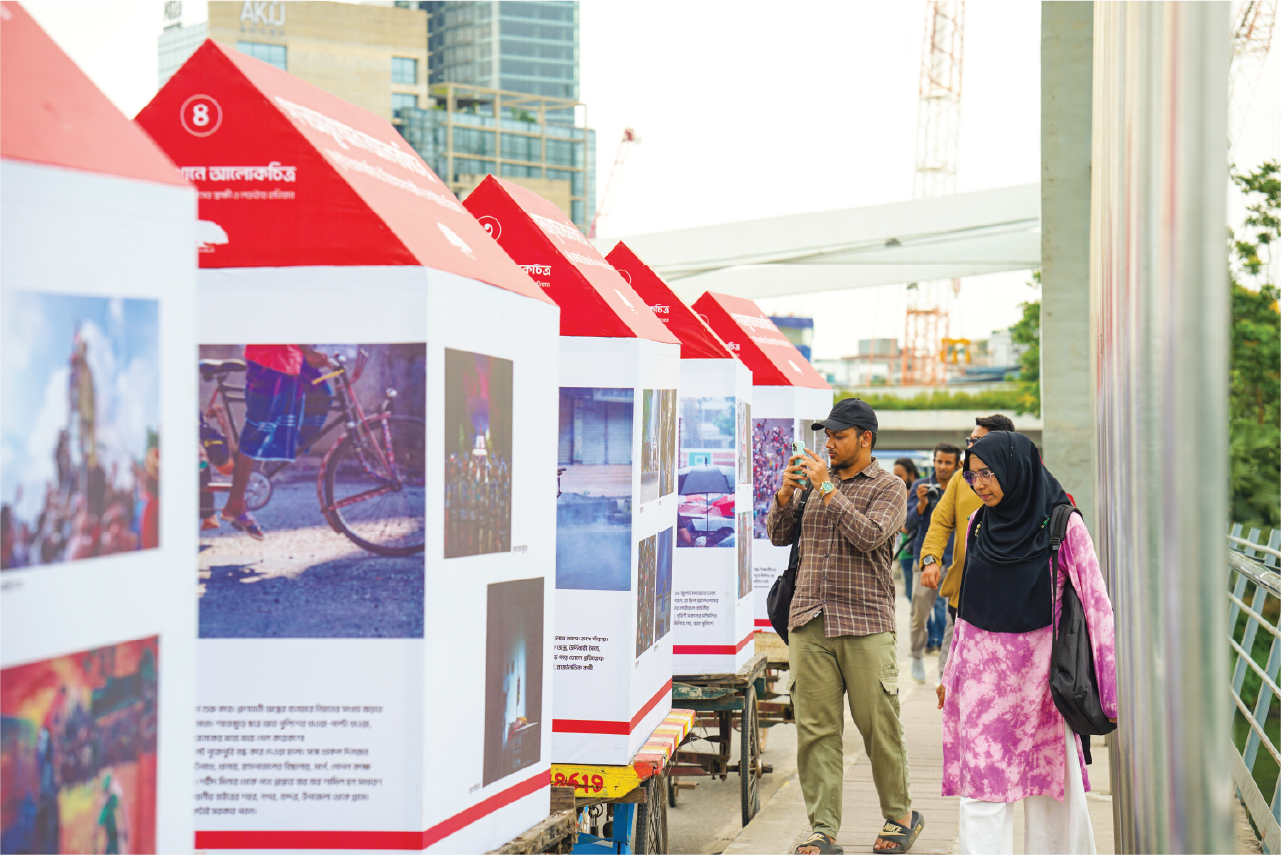
When asked about the downside of everyone having a camera in their hands today, Taslima shared a different perspective. On the contrary, she explained how portable devices have empowered not just photographers but everyday people to document history like never before.
If it weren’t for ordinary citizens, much of the horror of the July revolution across the country would have gone unseen. What was once a tool for personal use has now become a powerful instrument for capturing and sharing the truth.
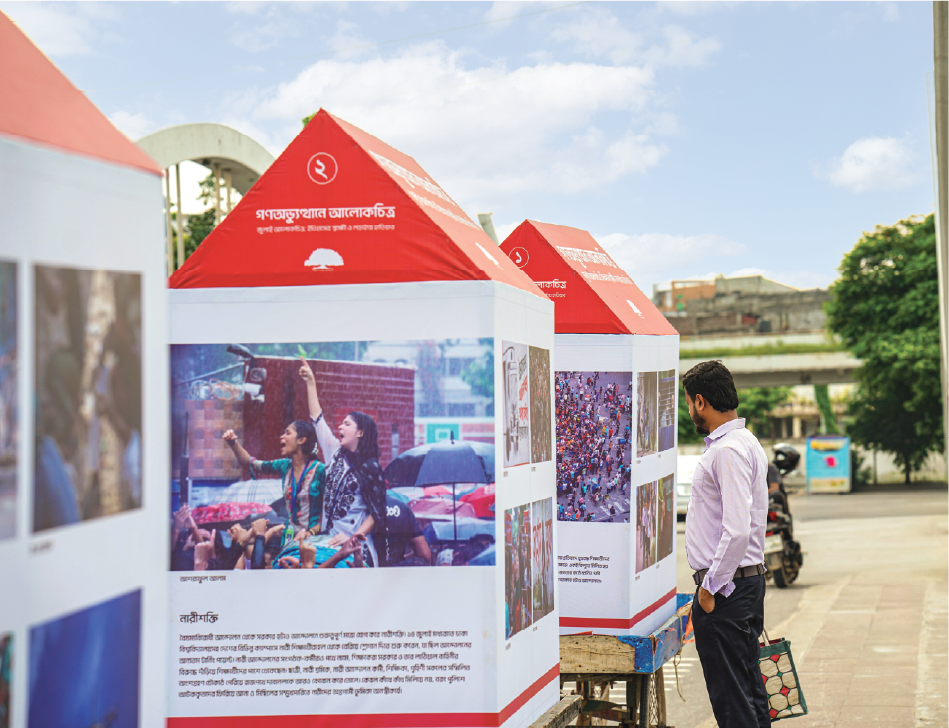
Exhibitions like this mark a crucial shift in the power dynamics of information. They democratise memory, ensuring the story of the revolution belongs to everyone—not just a privileged few. They also remind us that art and photography are powerful tools of resistance and collective remembrance.
Written by Fariha Hossain
Photo: Md. Rasel Ahmed




